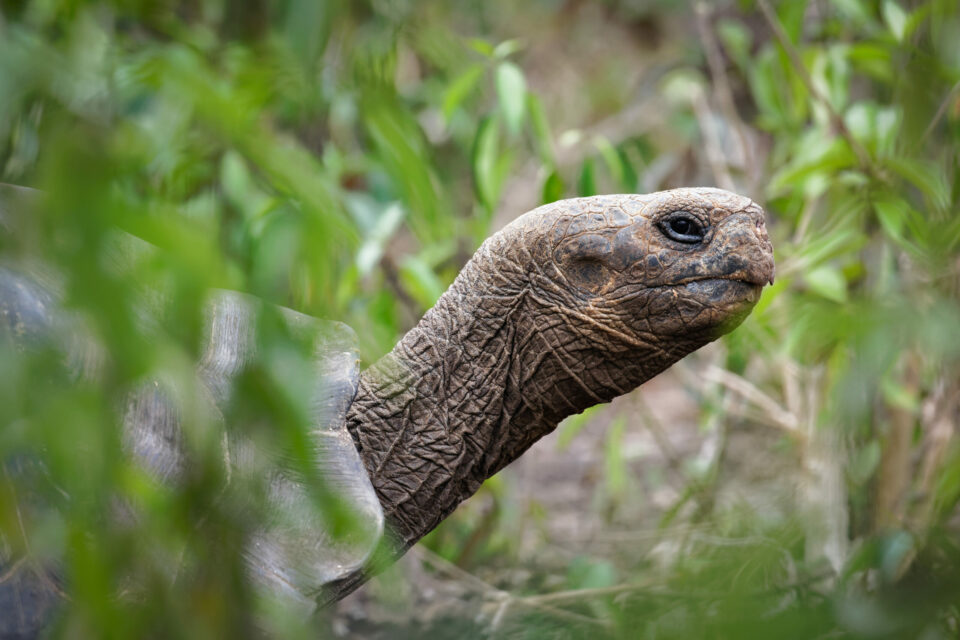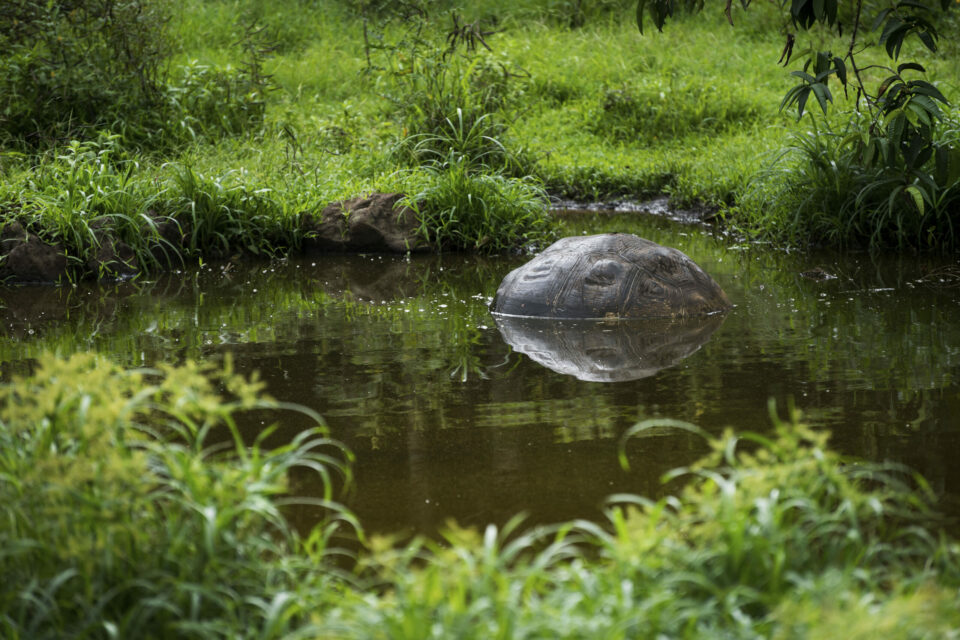

New research shows that Galapagos giant tortoises are ingesting plastic waste
A new study published in the journal Environmental Pollution has found that giant tortoises on Santa Cruz island are ingesting items including medical face masks, glass and plastic bags.
The collaborative study focused on the Western Santa Cruz giant tortoise (Chelonoidis porteri). This species, classified as Critically Endangered on the IUCN Red List, is the Galapagos tortoise that spends the most time in and around urban areas.
The researchers analysed tortoise faeces in two different zones: a restricted area of the Galapagos National Park, where only scientists and National Park rangers are permitted, and an area to the northwest of Puerto Ayora, the largest town in Galapagos and the main hub for the Islands’ tourist industry. This human-affected area included land used for agriculture, industry and urban housing, as well as a rural road and the main road between Puerto Ayora and Baltra airport.
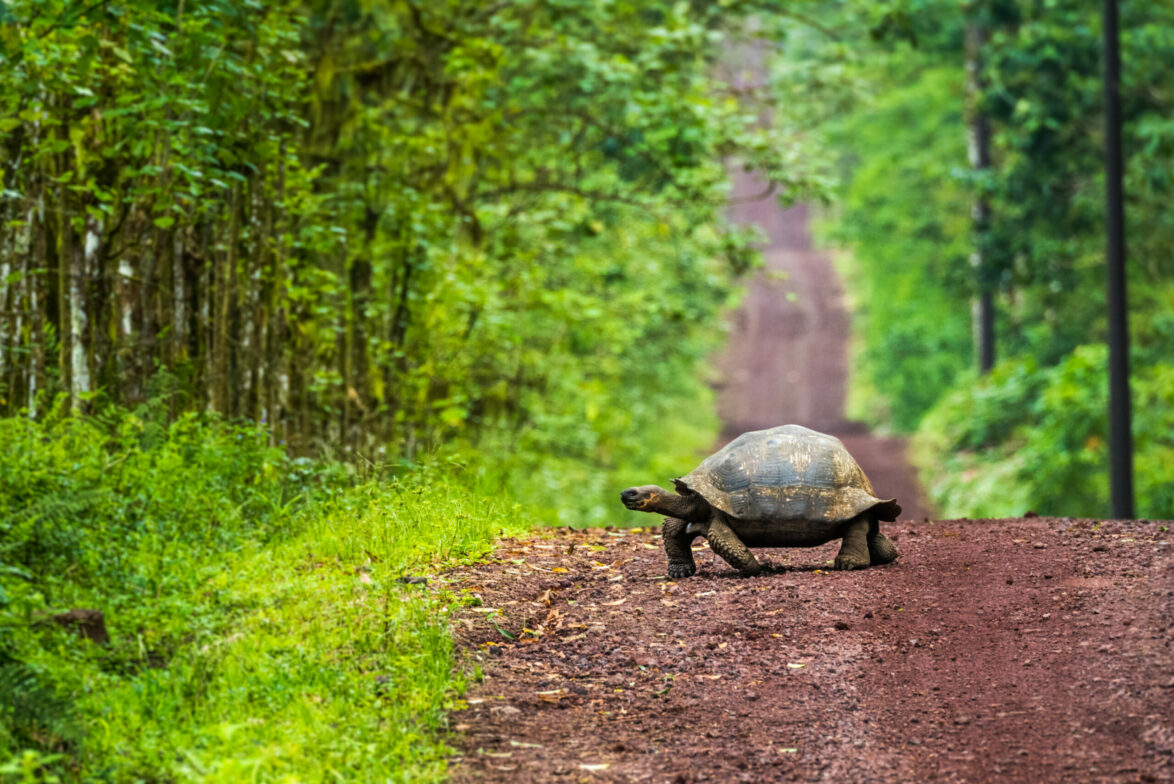
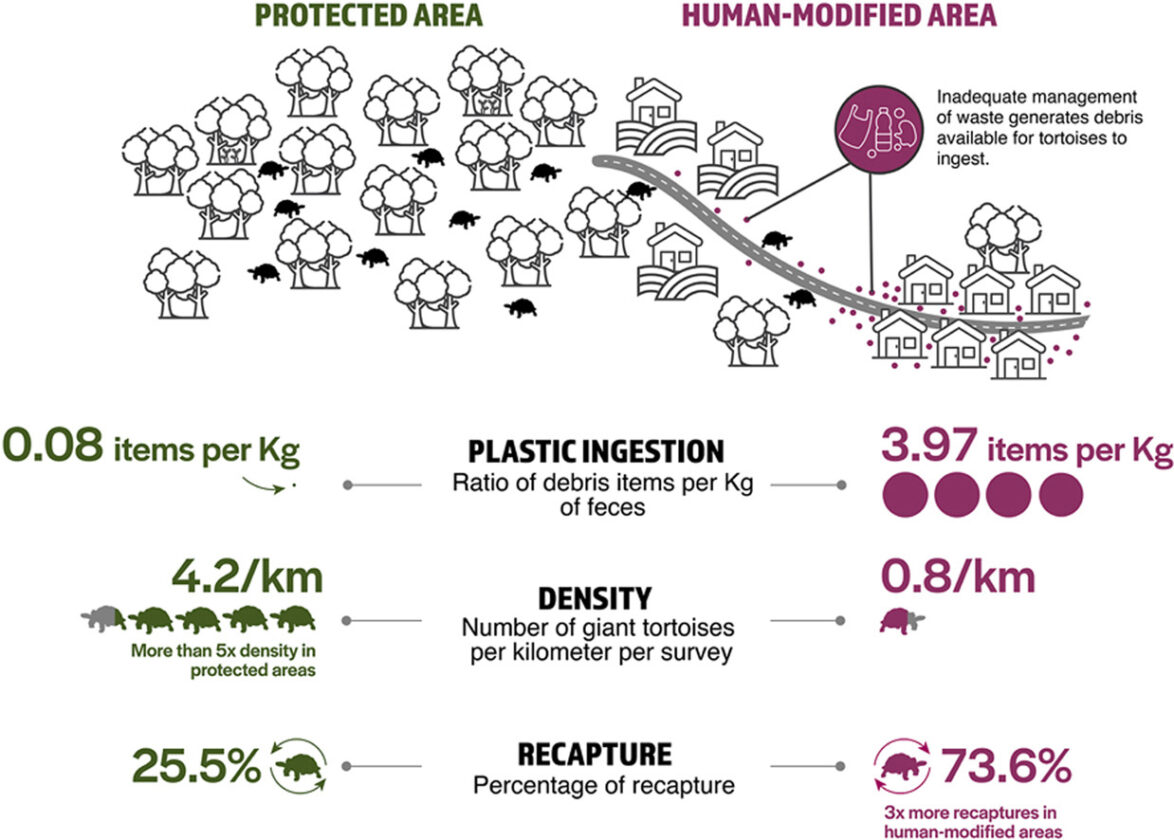
Plastic ingestion in giant tortoises: An example of a novel anthropogenic impact for Galapagos wildlife
Environmental Pollution – January 2024
Karina Ramón-Gómez, Santiago R. Ron, Sharon L. Deem, Kyana N. Pike, Colton Stevens, Juan Carlos Izurieta, Ainoa Nieto-Claudín
In total the research team collected over 1,000 faecal samples from the National Park, and over 5,500 from the urban and agricultural zone. These samples were painstakingly analysed at the Charles Darwin Research Station, and every item of debris visible to the naked eye was identified and catalogued. Only two fragments of debris were found in tortoise faeces from the National Park, compared to 590 items found in the samples taken from the area where the tortoises are coming into contact with humans, demonstrating that protected areas in the National Park are essential for the wellbeing of endemic species such as giant tortoises. Of the items that were found, either whole or fragments, 86.3% were made of plastic, including bags, balloons, bottles, ropes, bracelets, tape and disposable face masks. Of the remainder, 8.4% of the items were made of cloth, 2% from metal, 1.7% from paper or cardboard, 0.7% from synthetic rubber, 0.5% from construction materials (e.g. tile fragments) and 0.3% from glass.
Unsurprisingly, the amount of human-generated debris found in the faecal samples was strongly correlated with the amount of debris found in the environment; no litter at all was found in the National Park, whereas 462 items were found in the human-affected area. The researchers believe that the tortoises are mistaking these items for food, or accidentally ingesting them while feeding on ground-level vegetation.
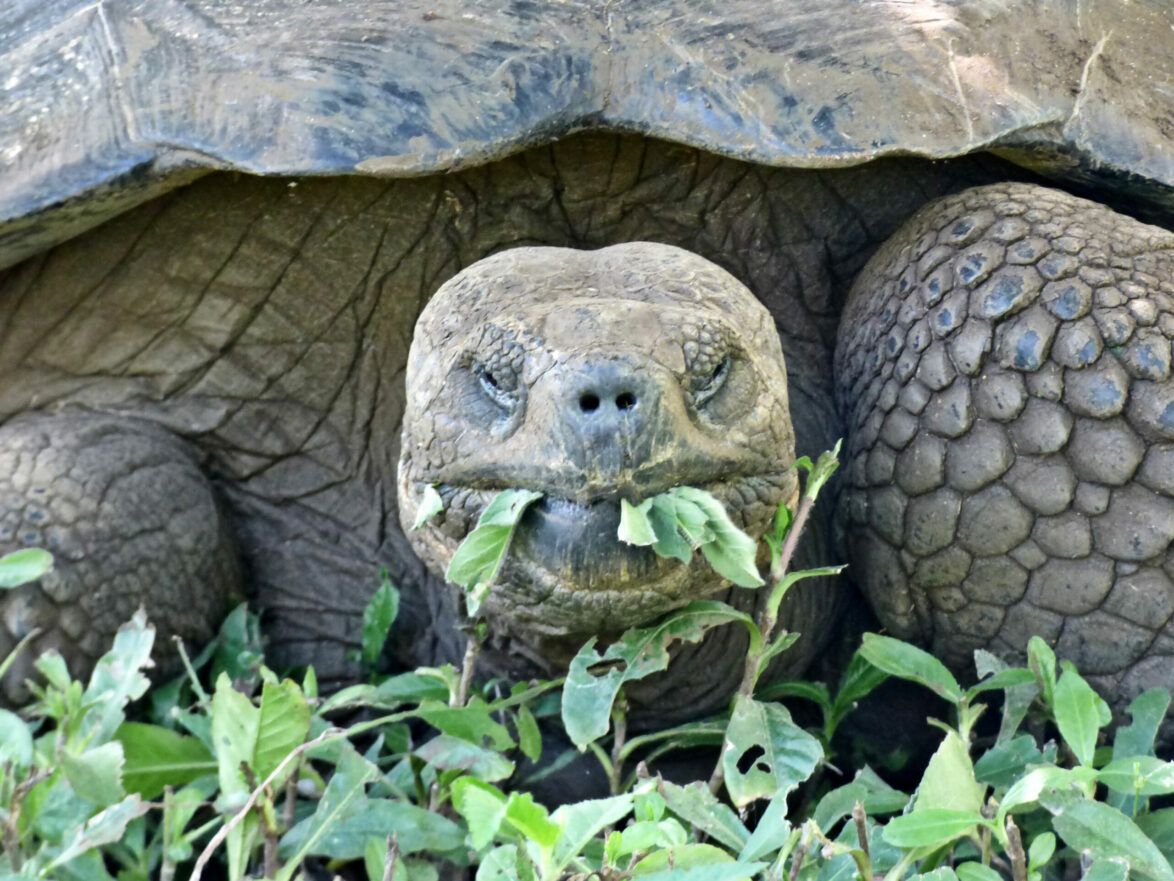
86.3 %
of litter items found in giant tortoise faeces were made of plastic
This is the first study of plastic ingestion in Galapagos giant tortoises. Although little is known about the impact of macro and microplastics on tortoise health, studies in other animals have shown adverse effects, and scientists are concerned about endocrine disruptor chemicals (EDCs) which can be found in all types of plastic material. Tortoises can take up to 28 days to digest their food, meaning that any materials they consume will be present in their digestive system for a long time, increasing the likelihood of absorbing dangerous chemicals.
A growing human population, which is linked to the continuing increase in tourist numbers, is putting more pressure on the natural environment on the populated islands. Local authorities have responded with a number of measures to reduce the impact of human activities on giant tortoises, including the ‘Más Vida, Menos Basura’ (More Life, Less Trash) campaign launched in 2017 to promote the use of reusable water bottles in schools in Galapagos. The Galapagos National Park Directorate (GNPD) led on the Ministerial Agreement 097, which prohibits the use of single-use plastics in educational establishments across Ecuador, and in 2022, the ‘Young Protectors of Giant Tortoises’ programme was launched. This programme engages young Galapagueños in monitoring and relocating reptiles found in or near urban areas to safer places, as well as in collecting litter found in areas frequently visited by these species.
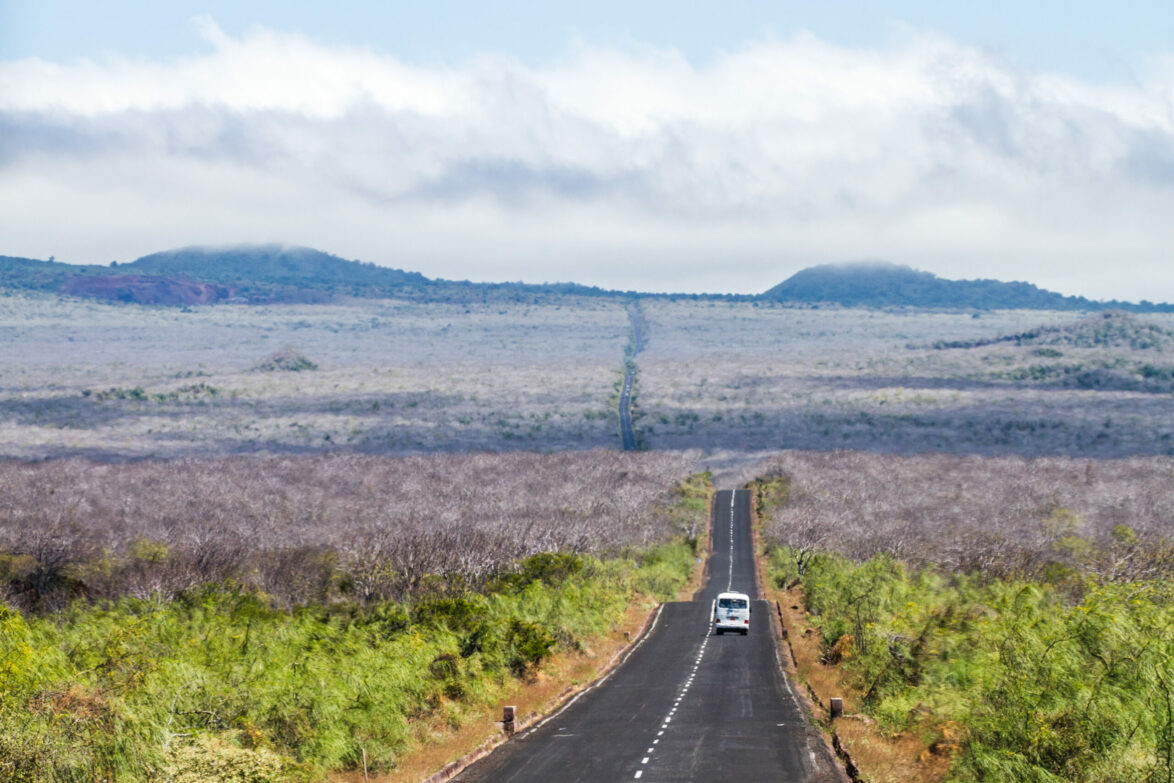
The study published in Environmental Pollution involved researchers from the Charles Darwin Foundation, the Pontificia Universidad Católica del Ecuador, Saint Louis Zoo, the Universidad Complutense de Madrid and James Cook University, supported by Galapagos Conservation Trust (GCT) and the GNPD.
GCT has been supporting the Galapagos Tortoise Movement Ecology Programme for over a decade, gathering data on the migration patterns of tortoises and building an increasingly detailed picture of the social, ecological and health factors that affect their conservation. We also lead the Pacific Plastics: Science to Solutions network together with the University of Exeter, bringing together scientists, NGOs, government and businesses across the Eastern Pacific region to tackle plastic pollution.
We are working with our partners on solutions at every level, from working with the local community on developing a circular economy for plastics, to campaigning for a strong and legally binding Global Plastics Treaty at the United Nations. We are also supporting the GNPD in their work to clean up the plastic waste washing up on Galapagos beaches, the vast majority of which originates outside the Archipelago.
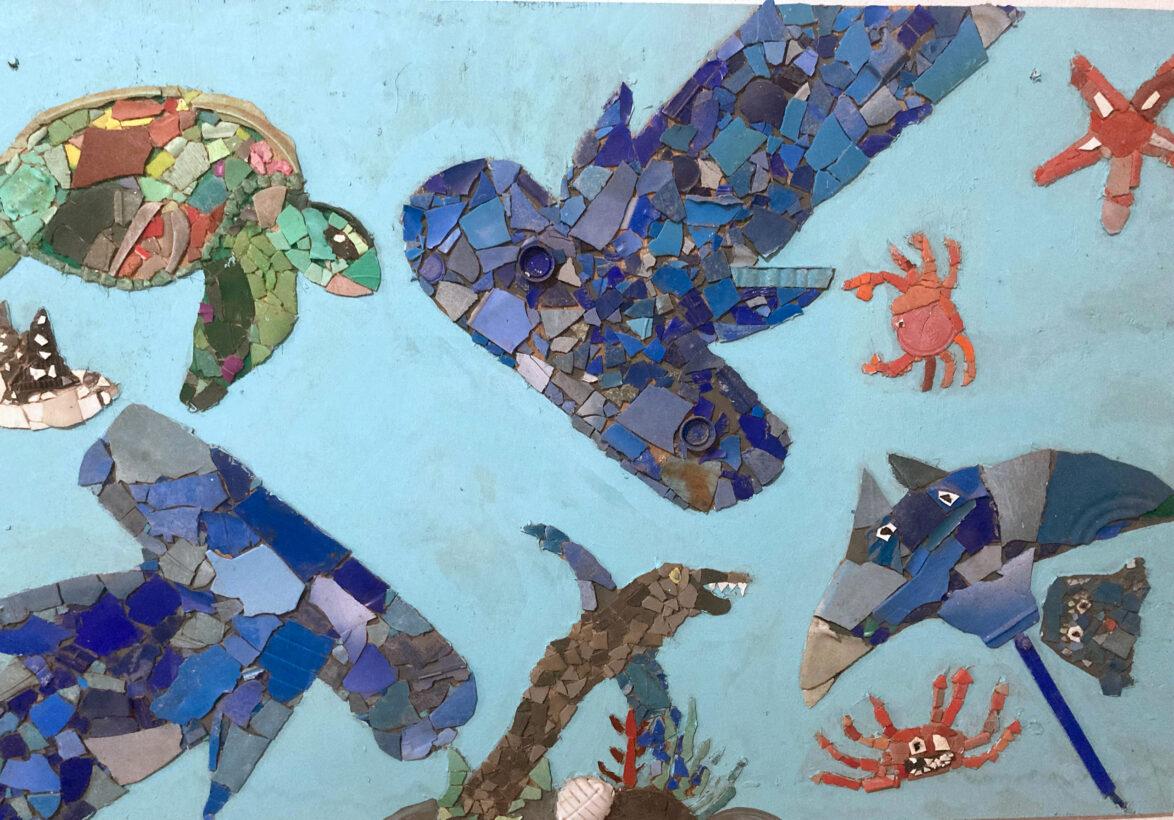
Creating a circular economy for plastics in Galapagos
Plastic pollution threatens more than 40 species in the Galapagos Islands due to the risk of ingestion or entanglement, and there is now an urgent need to embrace circular economy approaches and reduce plastic waste at source.
How you can help
By adopting a Galapagos giant tortoise you can help to protect this species, their habitats and other Galapagos wildlife, supporting projects like the Galapagos Tortoise Movement Ecology Programme.
Related articles

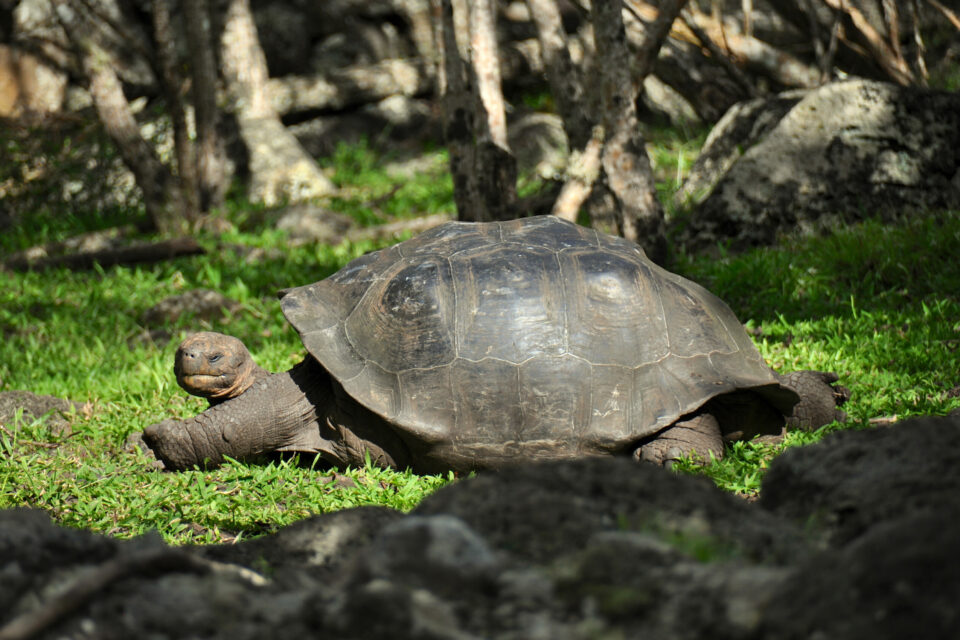
The return of the Floreana giant tortoise
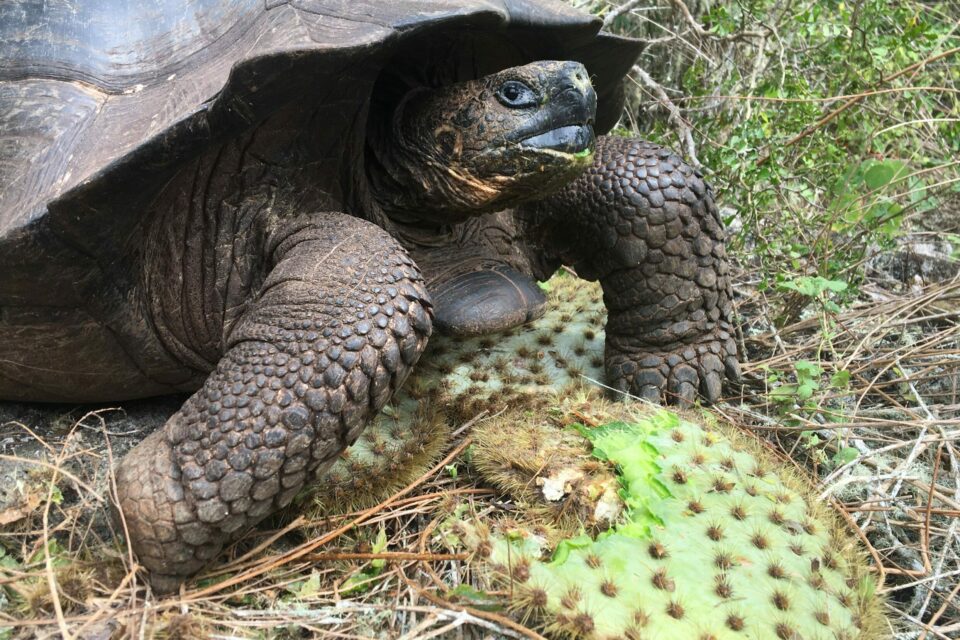
Galapagos giant tortoises: An update from the field
